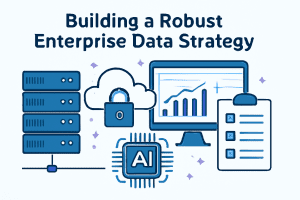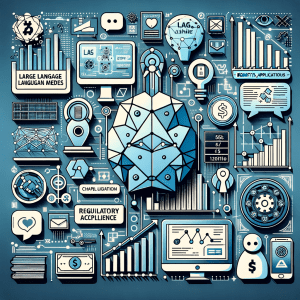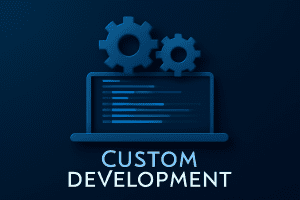Introduction
Artificial Intelligence (AI) has transformed the digital realm with advanced data analytics, natural language processing, and automation. Yet, the next frontier is the realm of Physical AI—where smart machines and autonomous robots interact with the physical world intelligently, dynamically adapting to their environments and tasks. Physical AI combines sensing, computation, and actuation to power smart robotics, autonomous vehicles, intelligent drones, and other machines able to think and act autonomously in real space.
This blog reveals 10 game-changing use cases of Physical AI fundamentally reshaping industries and everyday life. It also explores how innovations fueled by AI-driven tools from companies like TechOTD drive this transformation further (TechOTD AI services).
What Is Physical AI?
Physical AI integrates algorithms with sensors and actuators to enable machines to perceive, understand, and perform complex physical actions autonomously. Unlike software-only AI focused on data or decision-making in virtual spaces, Physical AI endows machines with physical autonomy—allowing them to sense their environment, learn continuously, and dynamically act without human intervention.
This technology underpins autonomous vehicles, robotic arms in manufacturing, surgical robots, and smart drones, blending AI models with real-time feedback control systems. Such machines optimize efficiency, safety, and productivity by reacting adaptively to unpredictable real-world scenarios.
1. Autonomous Delivery Robots
Autonomous delivery robots have transformed last-mile logistics by navigating urban and suburban environments to deliver parcels efficiently. These robots avoid obstacles, handle diverse weather conditions, and solve traditional delivery challenges such as parking limit and package theft.
For example, Amazon Scout, deployed in select neighborhoods, reliably carries packages up to 30 pounds and operates seamlessly in pedestrian zones. This represents a major cost-effective disruption in delivery services—reducing dependency on human drivers and enabling 24/7 delivery capabilities.
2. Surgical Robots in Healthcare
Physical AI-powered surgical systems enhance procedural precision and reduce patient recovery times. These robots stabilize surgical implements eliminating hand tremors and allow minimally invasive procedures through keyhole-sized openings.
Johnson & Johnson’s Ottava system, for instance, enables complex operations with accelerated recovery and reduced hospital stays. Such AI-driven robotic surgery revolutionizes healthcare delivery, improving outcomes in specialties like urology, gynecology, and cardiothoracic surgery (Learn more about AI in healthcare).
3. Intelligent Robotic Assembly in Manufacturing
Factories benefit immensely from Physical AI through intelligent robotic assembly lines. Robots equipped with AI learn continuously to adjust to variations in parts and production specifications, optimizing efficiency and minimizing human error.
This flexibility means factories rapidly adapt product designs or volumes without expensive retooling, exemplifying the future of smart manufacturing and digital twins—where virtual models simulate and optimize physical processes (How We Work at TechOTD).
4. Autonomous Vehicles and Fleet Management
From self-driving cars to autonomous trucks, Physical AI drives the future of transportation. Autonomous vehicles use extensive sensor arrays combined with AI to perceive surroundings, make split-second navigation decisions, and control driving actions.
Fleet operators leverage these technologies to reduce accidents, optimize fuel consumption, and enable predictive maintenance. This paradigm shift in logistics helps streamline supply chains and decrease operational costs while reducing carbon footprints (Blockchain integration in business).
5. Smart Agricultural Equipment
AI-powered farming machinery deploys drones, robotic harvesters, and smart irrigation systems to maximize crop yield and resource use. These machines analyze soil quality, monitor crop health with imaging sensors, and perform precision planting and harvesting autonomously.
Physical AI in agriculture reduces labor demands, minimizes waste, and helps meet growing food production needs sustainably. This transformation supports efficient food supply chains crucial for global populations (Predictive analytics software).
6. Autonomous Cleaning and Maintenance Robots
Commercial cleaning and maintenance robots maintain hospital hygiene, airport sanitation, and office cleanliness with minimal human supervision. They map facilities, optimize their cleaning paths, and adjust intensity based on usage patterns.
These robots help reduce hospital-acquired infections and maintain consistent standards across large, complex environments—ultimately improving safety and operational efficiency.
7. Intelligent Security and Surveillance Robots
Physical AI-driven surveillance robots continuously patrol facilities, using facial recognition and behavioral analysis to detect potential threats proactively. These machines operate in risky or inaccessible areas, coordinating with human security teams for comprehensive coverage.
Organizations deploying these robotic guards benefit from extended coverage, faster threat identification, and reduced manpower fatigue (Seamless customer journeys with AI).
8. Autonomous Drones for Wildlife and Environmental Monitoring
Mounted with non-invasive sensors, AI drones monitor wildlife movement, habitat health, and environmental changes without disturbing natural ecosystems. They collect data critical for conservation efforts, resource management, and climate science.
This use case highlights Physical AI’s capacity to merge humanitarian and environmental benefits with advanced technology (Technology impact on education).
9. Smart Warehouse Robots and Inventory Management
Robotic systems in warehouses automate picking, packing, and sorting—ensuring faster fulfillment cycles and higher accuracy. Physical AI enables these robots to navigate cluttered spaces, collaborate with human workers, and adapt to changing inventory needs.
This technology enhances eCommerce capabilities and supports scalable, efficient supply chains (Mobile app services).
10. AI-Enabled Construction Equipment
Heavy machinery empowered by Physical AI analyzes terrain in real-time and optimizes operations autonomously. Smart bulldozers, cranes, and excavators reduce fuel consumption and improve safety through predictive obstacle detection and automated project coordination.
Companies like Caterpillar are leaders in smart construction tech, boosting productivity on large-scale infrastructure projects (Best gadgets for programmers).
Conclusion: Embracing the Physical AI Revolution
Physical AI is redefining how industries operate—enabling machines to perform with autonomy, intelligence, and adaptability never seen before. From healthcare to logistics to agriculture, these smart machines transform operations, reduce costs, and improve safety and quality.
Businesses seeking to future-proof their operations must explore innovative Physical AI applications integrated with AI-driven analytics and automation solutions. TechOTD offers cutting-edge AI services to help organizations harness these powerful technologies and achieve new levels of operational excellence (Explore TechOTD AI solutions).
FAQs
Q1: How is Physical AI different from traditional robotics?
Traditional robots operate on pre-defined rules and programming. Physical AI robots continuously learn and adapt from sensor inputs and environments, enabling greater autonomy and flexibility.
Q2: What industries benefit most from Physical AI?
Healthcare, manufacturing, logistics, agriculture, construction, retail, and security are rapidly adopting Physical AI to optimize processes and outcomes.
Q3: Can small businesses leverage Physical AI?
Yes, scalable cloud AI services and affordable robotic solutions allow small to medium enterprises to integrate Physical AI affordably.
Q4: How does Physical AI integrate with other technologies like blockchain?
Blockchain enhances Physical AI by securing data integrity, transparency, and traceability, particularly in supply chains and critical infrastructure (Blockchain integration).
Q5: What role does AI-driven analytics play in Physical AI?
AI analytics empower predictive maintenance, anomaly detection, operational optimization, and strategic decision support across Physical AI systems (Predictive analytics).











